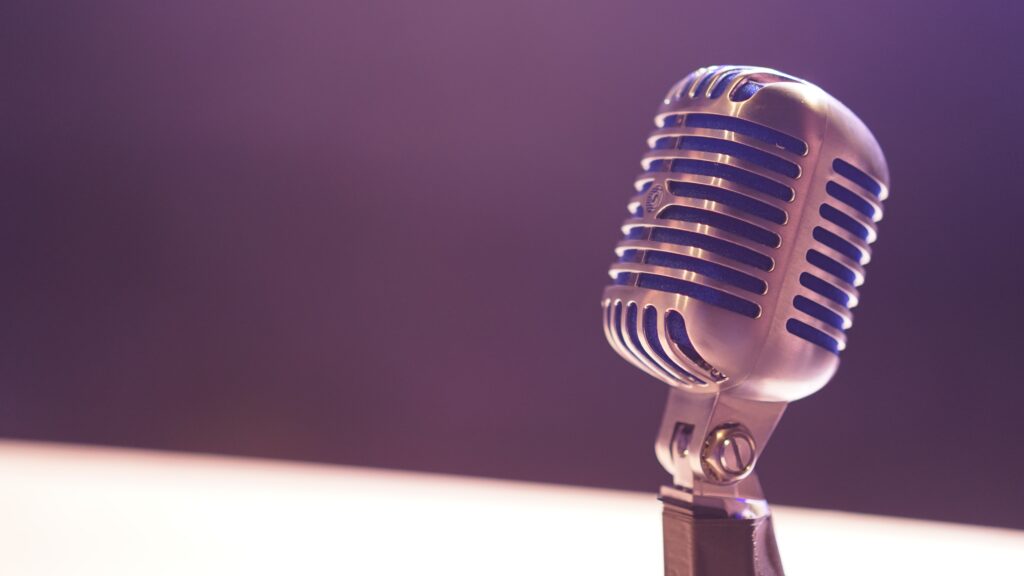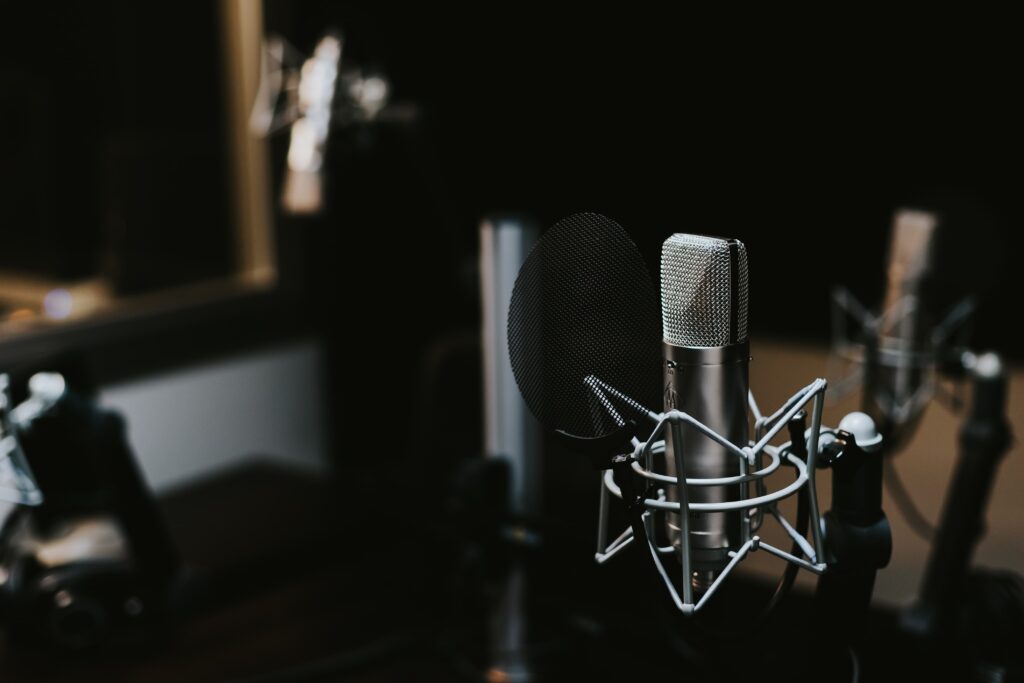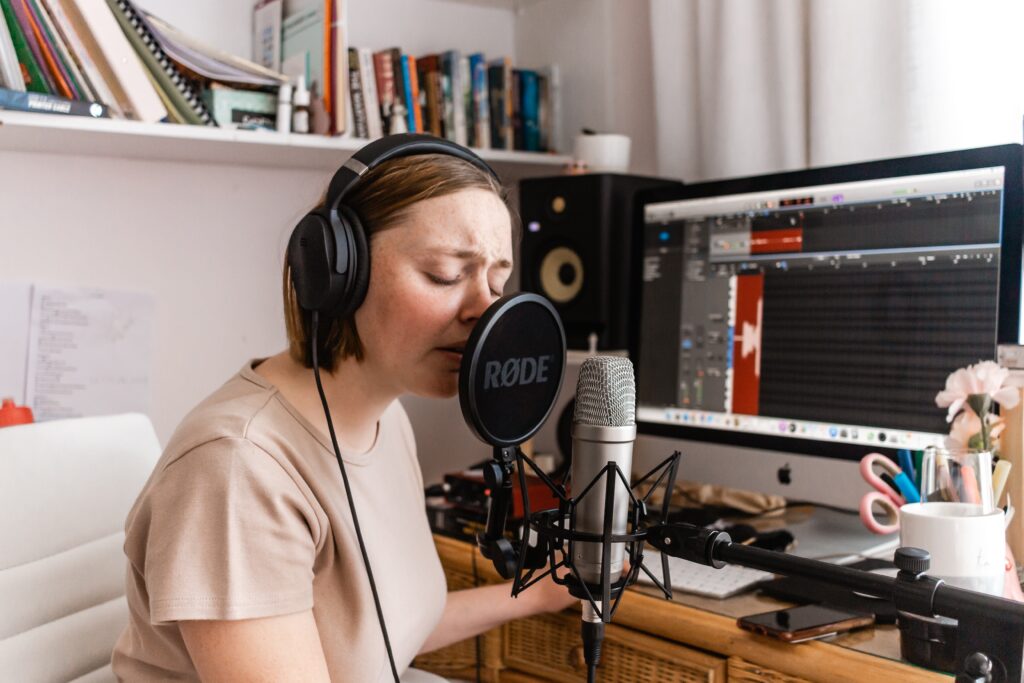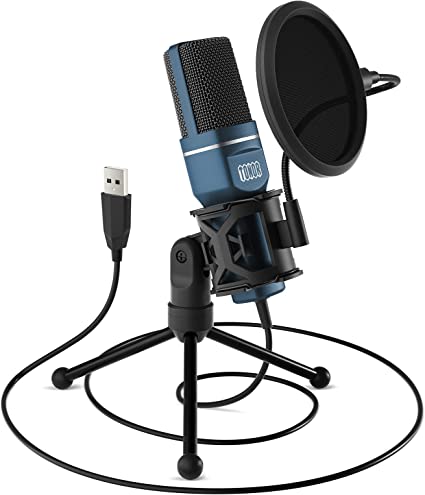A high-quality small-diaphragm microphone’s sound is neutral. As a result, a wide range of situations exist. Small diaphragm microphones are often used in pop music to record piano, acoustic guitar, stringed instruments, drums (overheads, snare, hi-hat, and cymbals), percussion, and other sounds.
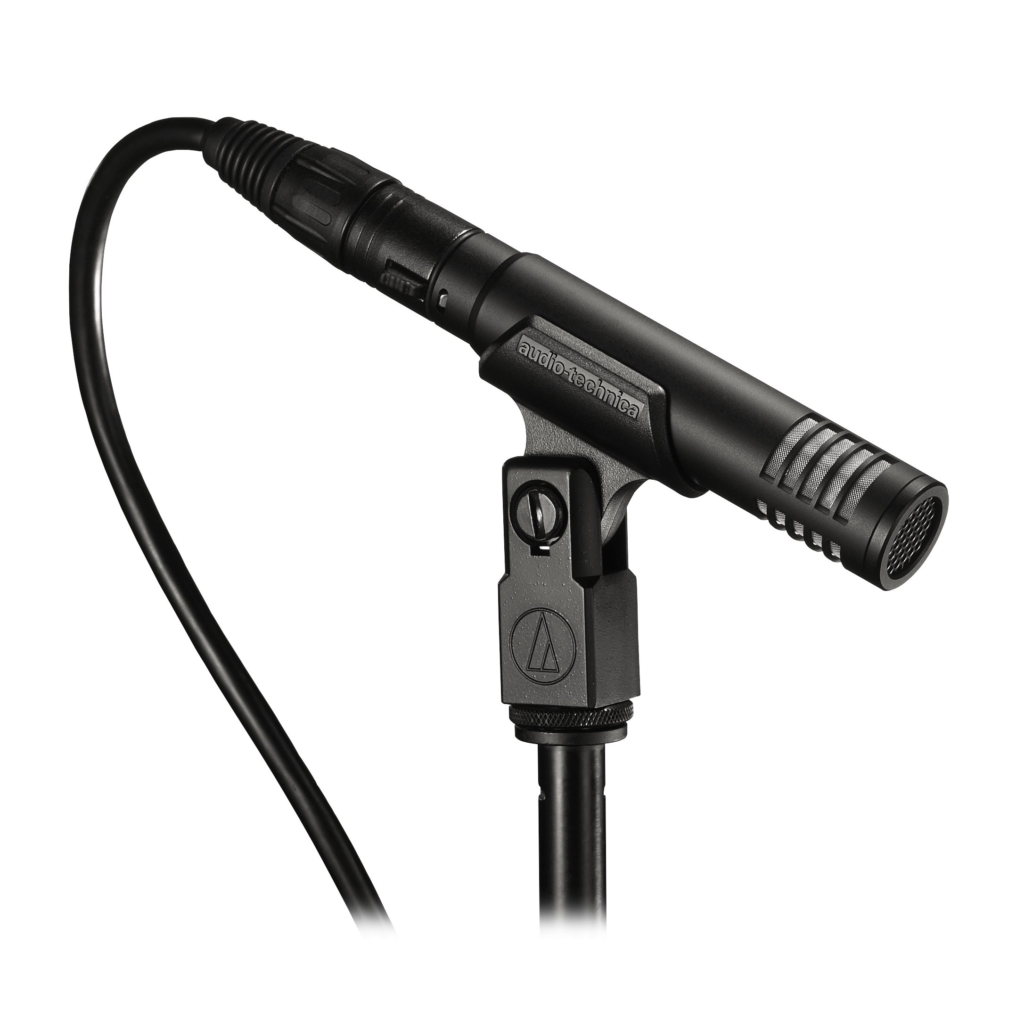
History of Small diaphragm condenser microphone
Small diaphragm condenser microphones have been used to record and playback sound for a long time. These microphones have a small size, a high sensitivity, and the ability to pick up the smallest sounds. At the beginning of the 20th century, the first small diaphragm condenser microphones were made. Small diaphragm condenser microphones are mostly used in phones and public address systems. Early microphones were big and bulky, but they helped make way for smaller mics with more features.
Small diaphragm condenser microphones became more common in the recording industry in the 1950s and 1960s, especially for recording vocals and acoustic instruments. People liked these microphones because they could pick up a wide range of frequencies and give a clear, detailed sound.
Small diaphragm condenser microphones are becoming increasingly popular for various uses, such as live sound reinforcement, broadcasting, and studio recording. Today, you can get these microphones in a wide range of sizes, shapes, and prices, and both professionals and amateurs use them.
What is a small diaphragm condenser microphone?
A small diaphragm condenser microphone turns sound into an electrical signal with fast transient responses to record sound pressure changes. You can record cymbals, guitar amps, strings, vocals, and much more with them. Condenser mics with a small diaphragm are more sensitive and can pick up higher frequencies than ones with a large diaphragm, but they may be noisier and distort the sound more.
Types of the small diaphragm condenser microphone
There are different kinds of small diaphragm condenser microphones out there. Here are some common ones:
Cardioid: Microphones with a cardioid pickup pattern are most sensitive to sounds directly in front of the mic. They are often used to isolate certain sources in a mix or recording environment.
Omnidirectional: Omnidirectional microphones have a 360-degree pickup pattern, which means they can pick up sounds from any direction. They are often used to record a group of musicians or the sound of a room.
Figure-8: Figure-8 microphones have a bidirectional pickup pattern, which means they are most sensitive to sounds coming directly in front of and behind the microphone. They are often used to record duets or other situations where two sources are on opposite sides of the microphone.
Stereo: Microphones that record sounds in stereo are called stereo microphones. Most of the time, they come in pairs and have two small diaphragm condenser microphones set up in a certain way, like an XY or a spaced pair.
Small diaphragm condenser microphones also come in many different shapes and sizes, each with special features and uses.
Features of the small diaphragm condenser microphone
Some of the things that all small diaphragm condenser microphones have in common are:
- High sensitivity: Small diaphragm condenser microphones are usually more sensitive than other types of microphones, which makes them good for picking up subtle details and nuances in sound.
- Fast transient response: Small diaphragm condenser microphones have a fast transient response, which means they can accurately record quick changes in sound pressure. That makes them great for recording cymbals, guitar amps, and strings, among other things.
- Wide frequency response: The typical small diaphragm condenser microphone can pick up all kinds of frequencies. Because of this, they can record everything from bass guitar to voices with very high and very low frequencies.
- Low noise: Many small diaphragm condenser microphones are made to have low noise levels, which helps reduce unwanted background noise and increase the signal-to-noise ratio.
- Adjustable polar pattern: Some small-diaphragm condenser microphones have polar patterns that can be changed, so the user can control where the microphone picks up sound. That is helpful when recording in different places or isolating certain sounds in a larger mix.
- Shock mount: Many small diaphragm condenser microphones come with a shock mount, which helps reduce noise and vibrations when the microphone is being handled.
- Preamp: Some small diaphragm condenser microphones need an external preamp to boost the signal, while others have a preamp built in.
Remember that a small diaphragm condenser microphone will have different features depending on the model and the company that made it.
Conclusion:
When you use a small diaphragm condenser, you will get a sound picture with a high level of information that is not colored or distorted. A “realist” microphone is one with a relatively small diaphragm. Using them, you can record anything you want to hear in its original form.

